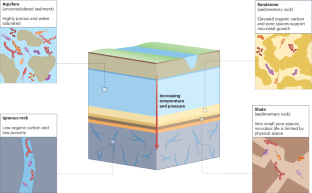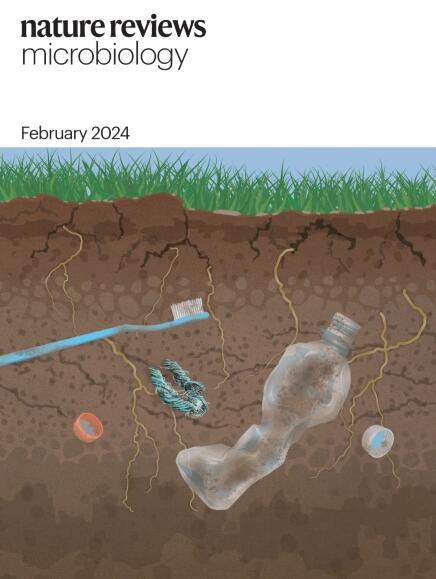人类活动对陆地地下生物圈的影响
IF 69.2
1区 生物学
Q1 MICROBIOLOGY
引用次数: 0
摘要
据估计,地表下是地球上最大的微生物生命库。然而,地表下也蕴藏着人类严重依赖的经济、工业和环境资源,包括各种能源以及用于储存工业废物和减缓气候变化的二氧化碳的地层。人类活动的结果是改变了地下景观,包括地下生物圈。通过创造新环境和引入促进微生物生命的基质,地下微生物群的结构和功能发生了显著变化。这些微生物的变化往往会对生态系统的整体功能产生意想不到的影响,从地球表面进行管理往往具有挑战性。在本《综述》中,我们将重点介绍有关人类活动对陆地次表层生物圈影响的新兴研究。我们探讨了人类如何通过钻探、采矿、污染和资源开采改变对地表下微生物生命的限制,以及微生物对资源回收和地表下基础设施的影响。本文章由计算机程序翻译,如有差异,请以英文原文为准。


Anthropogenic impacts on the terrestrial subsurface biosphere
The terrestrial subsurface is estimated to be the largest reservoir of microbial life on Earth. However, the subsurface also harbours economic, industrial and environmental resources, on which humans heavily rely, including diverse energy sources and formations for the storage of industrial waste and carbon dioxide for climate change mitigation. As a result of this anthropogenic activity, the subsurface landscape is transformed, including the subsurface biosphere. Through the creation of new environments and the introduction of substrates that fuel microbial life, the structure and function of subsurface microbiomes shift markedly. These microbial changes often have unintended effects on overall ecosystem function and are frequently challenging to manage from the surface of the Earth. In this Review, we highlight emerging research that investigates the impacts of anthropogenic activity on the terrestrial subsurface biosphere. We explore how humans alter the constraints on microbial life in the subsurface through drilling, mining, contamination and resource extraction, along with the resulting impacts of microorganisms on resource recovery and subsurface infrastructure. In this Review, Amundson et al. examine the importance and diversity of microbial life in the deep terrestrial subsurface and discuss how anthropogenic activity can affect microbial activity and composition in engineered subsurface systems.
求助全文
通过发布文献求助,成功后即可免费获取论文全文。
去求助
来源期刊

Nature Reviews Microbiology
生物-微生物学
CiteScore
74.00
自引率
0.50%
发文量
149
审稿时长
6-12 weeks
期刊介绍:
At Nature Reviews Microbiology, our goal is to become the leading source of reviews and commentaries for the scientific community we cater to. We are dedicated to publishing articles that are not only authoritative but also easily accessible, supplementing them with clear and concise figures, tables, and other visual aids. Our objective is to offer an unparalleled service to authors, referees, and readers, and we continuously strive to maximize the usefulness and impact of each article we publish. With a focus on Reviews, Perspectives, and Comments spanning the entire field of microbiology, our wide scope ensures that the work we feature reaches the widest possible audience.
 求助内容:
求助内容: 应助结果提醒方式:
应助结果提醒方式:


